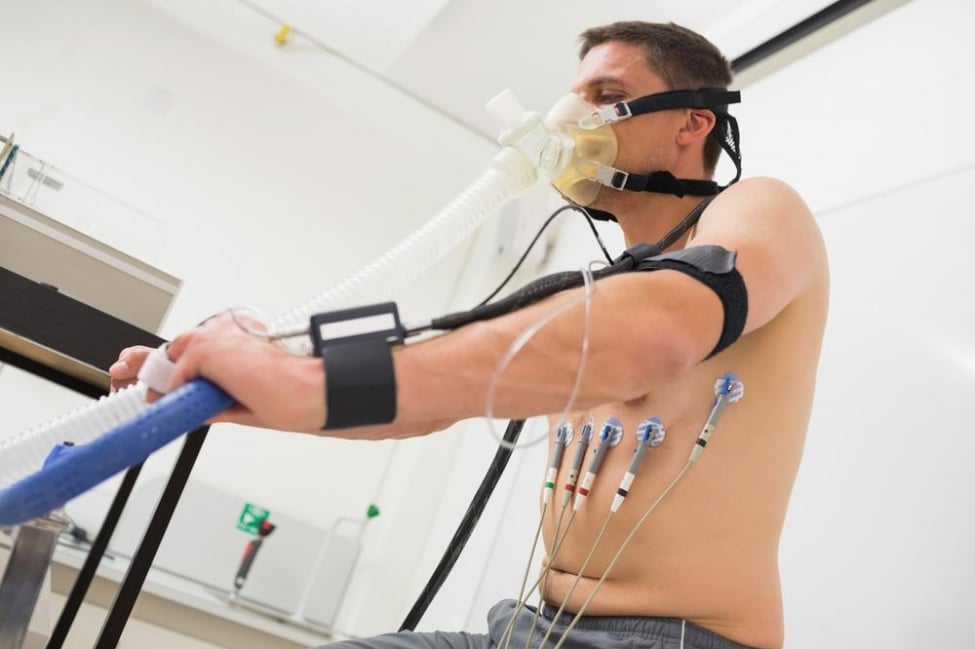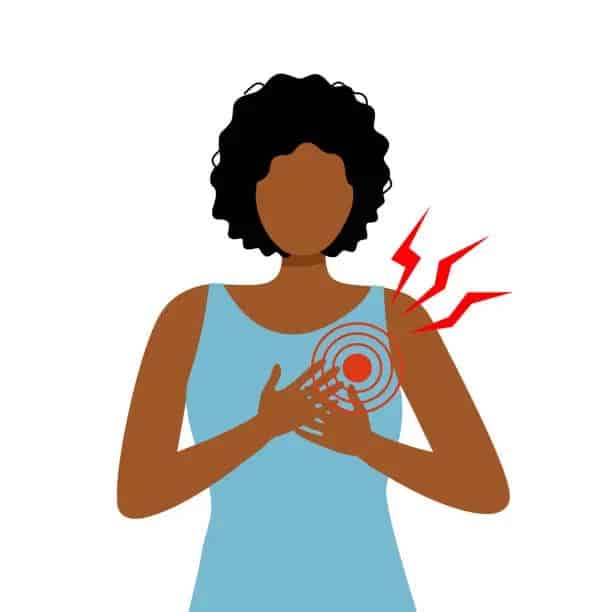Table of Contents
Introduction
A stress test, additionally called an exercise stress test, shows how your heart works during physical activity. Since exercise makes your heart beat more earnestly and faster, an exercise stress test can uncover issues with the blood flow inside your heart.
A stress test as a rule includes strolling on a treadmill or riding a fixed bicycle. Your heart rhythm, pulse, and breathing are observed. Or then again you’ll get a medication that imitates the impacts of the activity.
Your PCP may suggest a stress test on the off chance that you have signs or symptoms of coronary artery disease or irregular heart rhythm (arrhythmia). The test may likewise manage treatment options, measure the viability of treatment, or decide the seriousness if you’ve just been determined to have a heart problem.
What is a stress test?
A stress test, otherwise called an exercise test or treadmill test, is utilized by doctors to discover how well a patient’s heart functions during physical movement.
The stress test can likewise enable a doctor to educate patients on the best type of physical exercise for them.
A stress test normally includes strolling on a treadmill or riding a fixed bike while the patient’s breathing, circulatory strain, and heart rhythm are observed.
A few patients won’t have the option to do the exercises associated with an exercise stress test, for instance, those with joint inflammation.
Rather than working out, the patient can take a medication to make the heart work more diligently, as it may during exercise.
Why is an artificial stress test prescribed?
Your primary care physician may prescribe a stress test to:
Diagnose coronary artery disease.
Your coronary arteries are the significant arteries that supply your heart with blood, oxygen, and supplements. Coronary supply route malady creates when these arteries become harmed or ailing — as a rule, because of the development of stores containing cholesterol and different substances (plaques).
Diagnose heartbeat issues (arrhythmias).
Heart arrhythmias happen when the electrical impulses that coordinate your heart rhythm don’t work properly, making your heart beat faster, too gradually, or unpredictably.
Guide treatment of heart issues.
If you’ve just been diagnosed to have a heart condition, an exercise stress test can enable your general physician to discover how well treatment is functioning. It might likewise be utilized to help build up the treatment plan for you by demonstrating how much exercise your heart can deal with.
Your PCP may utilize a stress test to help decide the circumstance of heart medical procedure, for example, valve substitution. In certain individuals with a cardiovascular breakdown, stress test results may enable the doctor to decide if you need a heart transplant or other advanced treatments.
Your doctor may suggest a test with imaging, for example, a nuclear stress test or echocardiographic stress test, if an exercise stress test doesn’t pinpoint the reason for your side effects.
A stress test is usually safe, and inconveniences are uncommon. However, similarly, as with any clinical technique, there is a danger of inconveniences, including:
- Low pulse.
The circulatory strain may drop during or following activity, potentially making you feel discombobulated or faint. The issue ought to disappear after you quit working out.
- Irregular heart rhythms (arrhythmias).
Arrhythmias welcomed on by an activity stress test as a rule disappear not long after you quit working out.
- Cardiovascular failure (myocardial dead tissue).
Though incredibly uncommon, it’s conceivable that an activity stress test could cause a coronary episode.
The stress test catches the condition of your cardiovascular wellbeing during increased physical activity.
At the point when the heart siphons more earnestly during exercise, the stress test can uncover issues, for example, helpless blood supply through the coronary arteries. These issues probably won’t be clear on different occasions.
At the point when the nerve impulses that coordinate heart rhythm are flawed, the heart may pulsate sporadically.
An investigation at the Cleveland Clinic found that a stress test can distinguish those patients with obstructive coronary disease who are at higher risk of death.
What do they inject you with for a stress test?
Your physician will give you explicit directions on the best way to plan for your stress test.
Pharmacological stress test medications
You might be asked not to eat, drink, or smoke for a while before a stress test. You may need to stay away from caffeine the day preceding and the day of the test.
Approach your PCP if it’s safe for you to keep taking the entirety of your remedy and over-the-counter drugs before the test, since they may meddle with certain stress tests.
On the off chance that you utilize an inhaler for asthma or other breathing issues, carry it to the test. Ensure your PCP and the medical care colleague checking your stress test realize that you utilize an inhaler.
Apparel and individual things
Wear or bring comfortable garments and strolling shoes. In case you’re having a nuclear stress test, don’t apply oil, salve, or cream to your skin that day.
Your stress test will take around 60 minutes, including both your planning time and the time it takes to play out the real test. The genuine test takes just around 15 minutes. You may have an activity stress test in which you stroll on a treadmill or pedal a fixed bike.
The procedure of a stress test
Before a stress test
To start with, your general physician will pose a few inquiries about your medical history and how regularly and vigorously you work out. This decides the measure of activity that is fitting for you during the test. Your physician will likewise tune in to your heart and lungs for any irregularities that may influence your test outcomes.
During a stress test
An attendant or professional will put clingy patches (cathodes) on your chest, legs, and arms. A few zones may be shaved to enable them to stick. The terminals have wires associated with an electrocardiogram machine, which records the electrical signs that trigger your pulses. A sleeve on your arm checks your pulse during the test. You might be approached to inhale into a cylinder during the test to show how well you’re ready to inhale during exercise.
In case you’re not working out, your PCP will infuse the medication into your IV that builds bloodstream to your heart. You may feel flushed or winded, similarly as you would if you were working out. You may get a cerebral pain.
You’ll presumably practice on a treadmill or fixed bicycle, beginning gradually. As the test advances, the activity gets more troublesome. You can utilize the railing on the treadmill for balance. Try not to hold tight firmly, as this may slant the outcomes.
You keep practicing until your pulse has arrived at a set objective or until you create manifestations that don’t permit you to proceed. These signs and indications may include:
- Moderate to severe chest pain
- Severe shortness of breath
- Abnormally high or low blood pressure
- An abnormal heart rhythm
- Dizziness
- Fatigue
- Certain changes in your electrocardiogram
You and your PCP will examine your protected cutoff points for work out. You may stop the test whenever you’re too awkward to even think about continuing to work out.
After a stress test
After you quit working out, you might be approached to stop for a few seconds and afterward rest for a while with the screens set up. Your PCP can look for any anomalies as your pulse and breathing get back to normal.
At the point when your exercise stress test is finished, you may continue with your regular exercises except if your physician discloses to you in any case.
Results
On the off chance that the data assembled during your exercise stress test shows your heart capacity to be ordinary, you may not require any further tests.
Notwithstanding, if the outcomes are ordinary and your side effects keep on compounding, your PCP may suggest a nuclear stress test or another stress test that incorporates an echocardiogram with exercise or prescriptions to build bloodstream to your heart. These tests are more accurate and give more data about your heart work, yet they are additionally more costly.
On the off chance that your stress test results propose that you may have coronary artery disease or show an arrhythmia, your doctor will utilize the data to build up a treatment plan. You may require extra tests, for example, a coronary angiogram.
If you had a stress test to help decide treatment for a heart condition, your PCP will utilize the outcomes to plan or change your treatment.
Nuclear stress test vs. heart catheterization
The consequences of a stress test will direct what treatment can be given to help the patient’s heart issues.
If the underlying indications persevere or deteriorate, the doctor may suggest a nuclear stress test.
This will most likely give a more nitty-gritty and precise evaluation of the patient’s heart.
The cycle is the same, however, color is infused into the patient’s arm that will show up in the heart and bloodstream on a picture.
It will likewise show the territories of the heart where blood isn’t streaming. This can recommend a blockage.
This can be caught by an x-ray, or single-photon outflow PC tomography (SPECT), or cardiovascular positron emission tomography (PET).
Two angles of pictures will be taken, each enduring 15 to 30 minutes. The first will be taken soon after working out, and the subsequent will be taken when the body is very still, either soon thereafter or the following day.
This permits a doctor to analyze how the heart looks and functions regularly and under stress.
The test will take from 2 to 5 hours.
Conclusion
The patient may need to forgo eating, drinking, or smoking for 2 hours before the test. Once in a while, the doctor will prompt the patient not to take their typical meds heretofore or expend caffeine, as these can influence the outcomes.
On the off chance that the patient typically has an inhaler, they ought to carry this to the test and ensure the doctor knows about it.
For an exercise stress test, the patient should wear agreeable garments and strolling shoes.
This test will hence, take about 60 minutes.



